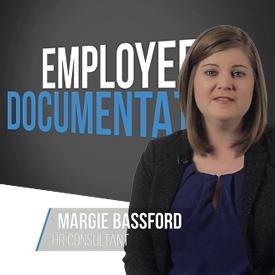- Beneficios para empleados
- Artículo
- Lectura de 6 minutos
- Last Updated: 12/24/2024
CalSavers Retirement Savings Program: What Employers and Employees Should Know

Table of Contents
Most California businesses will be required to participate in the CalSavers Retirement Savings program if they do not sponsor their own workplace retirement plan. Legislation signed on Aug. 26, 2022, expands access to an estimated 750,000 more private-sector employees. CalSavers is a state-sponsored retirement savings program that began as a pilot in 2018 that had a phased registration for businesses based on number of their employees.
Businesses had to register to participate in CalSavers or offer an equivalent qualified retirement program* that satisfies the mandate.
The new law, which took effect Jan. 1, 2023, states that any employer with at least one employee who is not also the owner is covered under the mandate, which means sole proprietorships and self-employed individuals are excluded from the mandate but can participate if they want. Businesses with 1 to 4 employees have a deadline of Dec. 31, 2025, to register for the program.
Employees who are either self-employed or don't work for an employer registered with CalSavers can sign up directly and make contributions that would be deducted automatically from their bank accounts.
CalSavers is designed to help the nearly 7.5 million private-sector employees in the Golden State who work for a business that does not offer a retirement plan.
*A qualified retirement plan includes a 401(a), 401(k), 403(a), 403(b), 408(k), or a 408(p).
What Is CalSavers?
CalSavers is an individual retirement account (IRA) similar to programs started in Oregon (OregonSaves) and Illinois (Secure Choice), as well as other states. This portable plan will have oversight from a public board of directors. However, California offers either a Roth or a traditional IRA. Roth IRAs invest post-taxed earnings and withdrawals aren't taxed, while traditional IRAs invest pre-tax earnings and withdrawals will be taxed as income.
What Are the Employer Requirements and Penalties?
Eligible employers must first register their business before their mandated deadline. Once registered, employers will be required to begin facilitation of the program, including adding their roster of eligible employees and remitting contributions for participating employees. Based on the law, businesses with four or fewer employees must register by Dec. 31, 2025, or offer a private plan similar to the state program that meets the mandate.
Employers also will:
- Not be able to make contributions
- Submit employee contributions
- Incur no fees to facilitate the program
Even though there is no fee to register for the program, employers could face financial penalties for not having a retirement savings plan available for eligible employees to join. The proposed fines range from $250 per eligible employee if an employer remains noncompliant after 90 days of being served notice, escalating to $500 per eligible employee if noncompliance reaches 180 days or more after the notice.
Employers also must factor in some investment of time on their part once they do register for the program, including setting up an account and then managing the account. Account setup includes such tasks as creating a payroll list to enroll employees, designating a payroll service provider – employers can use the one they have, if applicable – and transmitting payroll to a third-party administrator determined by the board of directors. Account management duties require employers to submit contributions (which means having a detailed list of what each employee’s contribution rate is) and adding new employees when necessary.
Do Businesses Have to Use CalSavers?
No. Registering for the CalSavers program is one way to fulfill the requirement that every qualified employee in California have access to a retirement plan. Businesses can also establish their own employee retirement plan, such as a 401(k) or SIMPLE IRA, to satisfy this requirement. You should consider all available options before deciding, including researching retirement plan solutions such as a Pooled Employer Plan through an industry-leading service provider such as Paychex.
What Responsibilities Do Employees Have with CalSavers?
In CalSavers, employees gain a portable plan that follows them from job to job and enables them to opt out and in at any point. If employees do not act within 30 days of notification once an employer registers for the program, they will be automatically enrolled at the default savings rate.
Employees should know:
- Contributions will be made through payroll deduction
- The default savings rate is 5 percent of gross pay
- They have option to customize their plan and choose a different rate and change that rate at any time
- The annual auto-escalation rate is 1% with a cap at 8%
- They can opt back in to the program at any time
What are the Differences Among State-Run IRAs, SIMPLE IRAs and 401(k) Plans?
A state-sponsored IRA is one way to satisfy requirements and help employees save for retirement. However, it's in businesses’ best interest to compare it with other financial options and decide which option best fits their needs and those of their employees.
The chart below shows key characteristics of a state-run IRA compared to a SIMPLE IRA and 401(k) plan, both of which Paychex offers. The biggest differences are the option for a company to match a portion of savers' contributions, and the maximum amount employees can contribute.
| 2025 | State IRA | SIMPLE IRA (Offered by Paychex) | 401(k) (Offered by Paychex) |
| Contribution Max | $7,000 | $16,500 | $23,500 |
| Company Match Option | No | Yes, mandatory | Yes, at employer’s discretion |
| Tax Credits for Opening a New Plan | No | Up to $16,500 for the first 3 years1 | Up to $16,500 for the first 3 years1 |
| Contribution Credit | No | Up to $1,000 per employee2 | Up to $1,000 per employee2 |
| Employer Tasks | The employer processes payroll contributions, updates contribution rates, adds newly eligible employees, etc. | Paychex is the plan administrator | Paychex is the plan administrator |
1Setting Every Community Up for Retirement Act of 2019. New plans may be eligible for up to $5,000 a year over three years and an auto-enrollment credit of $500 a year over three years.
2Under SECURE Act 2.0, credit is limited to employers with 50 or fewer employees and reduced for employers with 51 to 100 employees. The credit is generally a percentage of the amount contributed by the employer.
Who is exempt from the California retirement plan mandate?
These requirements and deadlines apply to private-sector businesses only. The CalSavers website includes more details about exemptions, including employees under the age of 18, religious organizations, and more.
Can I withdraw from CalSavers?
Eligible employers cannot withdraw from the program once registered unless they are doing so to establish their own qualified retirement plan. Employees may choose to opt out of the program at any time if they don't want to participate.
Do California employers have to offer a retirement plan?
California employers that meet certain requirements must offer a retirement plan by a specific date — either a plan through the state-sponsored CalSavers program, or by establishing their own qualified retirement plan: 401(a), 401(k), 403(a), 403(b), 408(k), or 408(p).
Is CalSavers a Roth IRA?
The CalSavers program is a Roth IRA, meaning that post-tax earnings are invested and eligible withdrawals aren't taxed. There is an option for employees to convert their contributions to a traditional IRA (pre-tax earnings invested and withdrawals are taxed as income), which they can do on the CalSavers website.
Can I register for CalSavers at any time?
Eligible employers can request to register at any time, as long as they meet the specified deadlines for either beginning to offer their own qualified retirement plan or registering for the CalSavers retirement program.
How much does the CalSavers program cost employers?
There is no fee for employers to participate in the CalSavers program.
How is the size of my business determined?
Eligibility for the program is based on your average number of employees you report to the Employment Development Department on your DE9C filings from the previous calendar year.
There are many moving parts for employers to comply with CalSavers program requirements. We can help you stay up-to-date on state retirement plans, including key dates, enrollment information, and eligibility requirements. See how Paychex helps California businesses keep up with changing state and federal laws and regulations that could affect your business — and get help managing your employee benefits, HR, and payroll.
Tags







